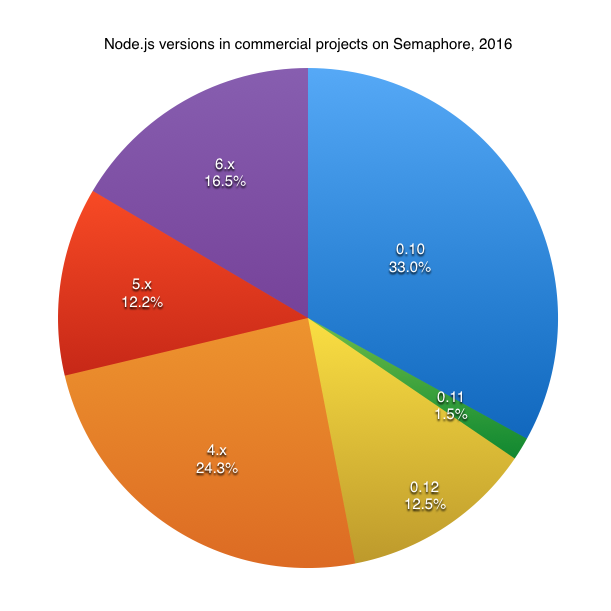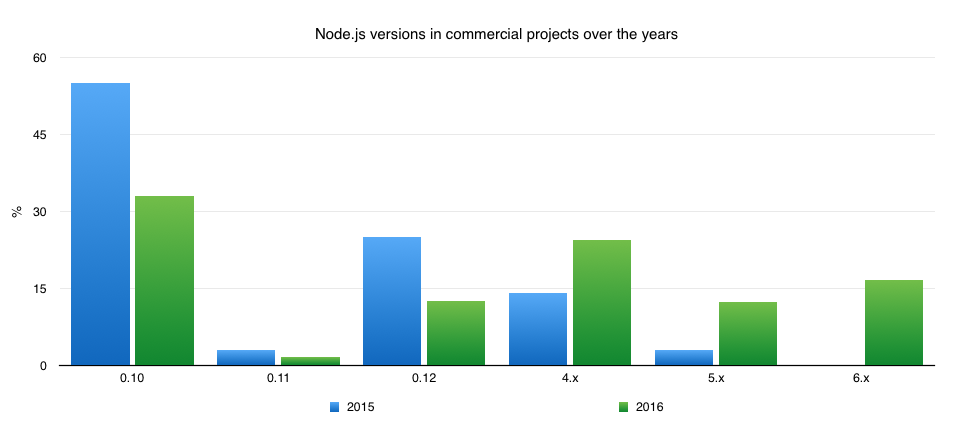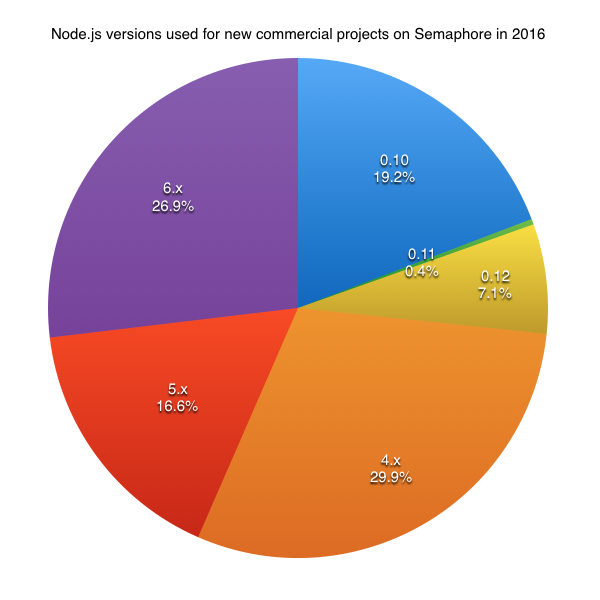Following up on our last week’s post for Ruby, we’re presenting the second annual report of Node.js version usage in commercial JavaScript projects on Semaphore (see 2015 numbers here). We think it’s always interesting to see what people are using to get the job done, and projects actively using continuous integration can be a solid sample.
 Naturally when you compare year over year, there’s always a trend towards using newer versions. A third of projects is still using Node 0.10 (down from 55% last year), whose long-term support (LTS) maintenance period ends on October 31. If you are not familiar with Node.js foundation’s release and maintenance schedule, you can see it here.
Naturally when you compare year over year, there’s always a trend towards using newer versions. A third of projects is still using Node 0.10 (down from 55% last year), whose long-term support (LTS) maintenance period ends on October 31. If you are not familiar with Node.js foundation’s release and maintenance schedule, you can see it here.

At the moment, Node version 4 is the LTS and Node 6 the “current” release. It is also notable that AWS introduced support for Node 4.3 on its growingly popular Lambda platform in April 2016 (previously only 0.10 was available).

Let’s zoom in on what the picture would look like if we focused only on the projects started in 2016. Note that Semaphore knows only when a project’s CI/CD was set up, so it’s an approximation.

The current LTS and latest versions dominate, although it’s still very much a mix of everything.
What’s your team’s approach to working with Node.js version(s)? Share your thoughts in the comments below.
P.S. Looking for CI/CD solution that’s easy to use, fast and supports all major Node.js versions out of the box? Try Semaphore for free.
Want to discuss this article? Join our Discord.
